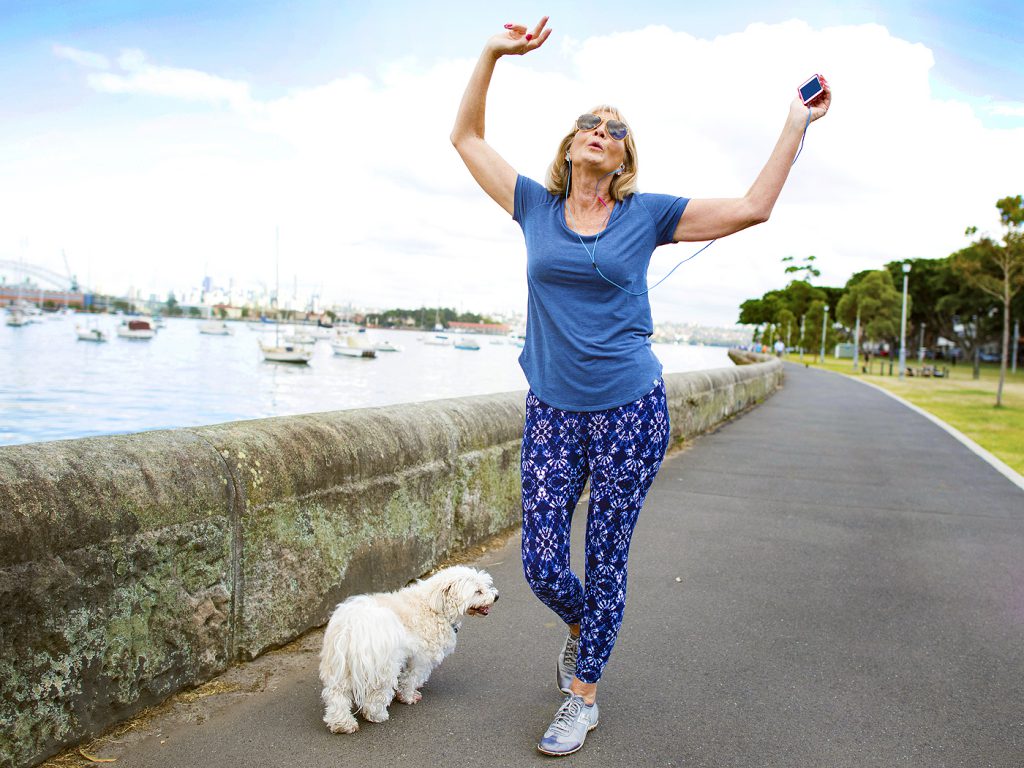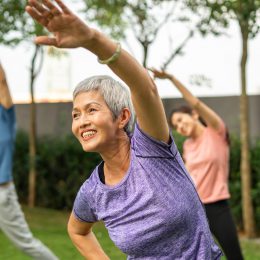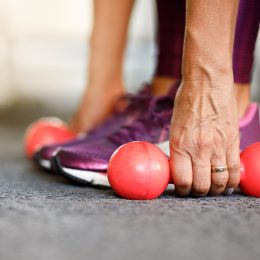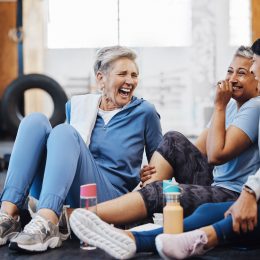The 1-Minute Fitness Test That Will Help You Stay Independent
The strength of your grip, relative to your body size, is a powerful predictor of your future health.

The last time you visited your doctor for a routine checkup, what data did you leave with? If your appointments are anything like mine, in addition to your blood pressure and heart rate, you were told your body mass index (BMI), a measure of your weight relative to your height. (You can calculate yours here.) When it’s above 25, your doctor will probably suggest, subtly or overtly, that losing weight can improve your health.
The problem with BMI is that, as a stand-alone measure of your health, it doesn’t tell your doctor what your body can do, relative to your size. It doesn’t say if you’re strong enough to lift or carry grocery bags, push a piece of furniture across the room, pull a fallen tree branch out of your driveway, or anything else an older person needs to be able to do to remain self-sufficient.
But there’s an easy, cheap, fast, and noninvasive way for your doctor to do exactly that: test your grip strength. All she would need is a piece of equipment called a handgrip dynamometer, which costs as little as $30 for a home version and about $250 for a clinical-grade device.
The test itself is simple: With your arm at your side and your elbow bent 90 degrees, grip the dynamometer as hard as you can. Pause 10 to 20 seconds, and try again. After three maximum-effort squeezes with your nondominant hand (your left if you’re right-handed), “you get a nearly perfect snapshot of someone’s strength capacity,” says Mark Peterson, Ph.D., an assistant professor of physical medicine and rehabilitation at the University of Michigan.
Peterson has done extensive research using handgrip tests to determine clinically significant weakness in older adults—for good reason. “Strength loss with age is one of the best predictors of disability, frailty, cardiometabolic disease, and early mortality,” he says. “There’s even some evidence that strength loss is associated with dementia and Alzheimer’s disease.”
Unfortunately, for most of us, there’s little chance that your own doctor would use this test in your next routine checkup, much less compile data across multiple visits to make sure you’re maintaining strength.
But we can apply the lessons we’ve learned from grip-strength research to our own lives, especially our workouts, to put off those strength declines as long as possible. Of course, if you have a hand injury or condition, follow your doctor’s instructions.
Why Grip Strength Matters
The first studies linking grip strength to life-and-death outcomes appeared in the 1980s. “For a long time, grip strength was used as an indicator of nutritional status,” Peterson says. A weaker person was more likely to be malnourished and less likely to survive a major surgery or to outlive their peers who were stronger.
Since then it’s become a reliable proxy measure of functional, total-body strength and vitality. For example, a 2015 study in The Lancet looked at populations across 17 countries and found that those with the highest grip strength were more likely to live longer and less likely to die from a heart attack or stroke.
Peterson acknowledges that it’s easy to misinterpret the research. “When I try to explain this to someone like my mom, she’ll say, ‘So I need to do more forearm training?’” The strength of your hand and forearm muscles is only important because it reflects what they can do along with all your other muscles in coordinated movements.
But even total strength isn’t the most important measure; your real goal is pound-for-pound strength. After all, you’d expect a 250-pound man to be stronger than a guy who weighs 150, regardless of which guy is healthier. “You want to be strong for your weight,” Peterson says.
Subscribe to our newsletter
It's quick and easy. You could be one of the 13 million people who are eligible.
Already a member? Click to discover our 15,000+ participating locations.
Follow Us
That means your own body is the best tool you have for increasing your strength relative to your size. Peterson recommends starting with simple bodyweight exercises like squats, lunges, and pushup variations.
As you get more experienced, you can add to the benefits of your workouts by using free weights. Dumbbells, for example, require you to lift the weights out of the rack, carry them to an open spot to do the exercise, and then carry them back. If you prefer machines, use the ones that require you to add and remove weight plates, if your gym gives you those options.
The more weights you pick up, put down, and move around, the more functional work you do. That is, you work all the muscles—from your hands to your feet and everything in between—at the same time.
Outside the gym, you can accomplish a lot just by doing all the messy, sweaty things most of us try to avoid: mowing the lawn, doing yardwork, digging holes, and chopping wood, plus all the lifting, carrying, and stacking that goes along with those chores.
With that much activity, you may even lose a couple of pounds of fat from your waist or hips. If you do, you’ll not only become stronger relative to your size, you’ll probably feel better too—all because you took your health into your own hands.





